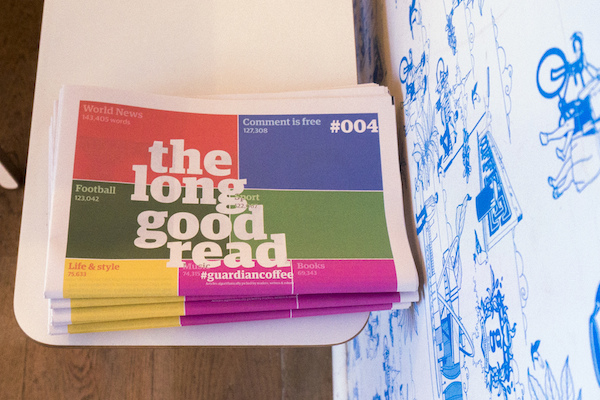The Guardian and The Newspaper Club are getting back into business for another printing of The Long Good Read.

The algorithm-driven newspaper, which collected the best of the Guardian’s long-form writing in a weekly tabloid — we wrote about it in December — is coming back for another six-week run. I emailed Tom Taylor, head of engineering for The Newspaper Club, who told me the response from readers prompted another printing of the paper.
“If last time was about seeing if the idea was viable, this run is about making it repeatable and see whether it’s something that could scale up,” Taylor said over email.
The first printing of the paper provided plenty of lessons, Taylor said. On the newspaper side, there’s an analytics issue, Taylor said, because it was even more difficult than usual to track how many print copies were being read. (Since the papers were distributed in a coffee shop, many of the copies simply got left for other patrons to read, Taylor said.)
On the production side, Taylor said they’re trying to refine the algorithm that selects stories to cut back on time-sensitive stories, and give weight to pieces that generated good online discussion. One of the novel things about The Long Good Read is that both the selection and layout of stories is automated. Taylor said they want to add more depth to the design of the paper so the layouts don’t feel too similar to readers.
“We’re thinking about how to include some kind of feedback loop — a section to scrawl your thoughts on and return to us somehow. We’re wondering what the equivalent of the comments form is,” he said.
Taylor said The Newspaper Club is lucky to have a partner like The Guardian that sees the future of media in both print and digital. Companies have to be willing to explore new technology while also finding new uses for older, traditional processes, like print, he said.
“Lots of media companies have spent so long running towards their digital future, that they can’t possibly consider that print might still have legs, when done in the right way,” he said.